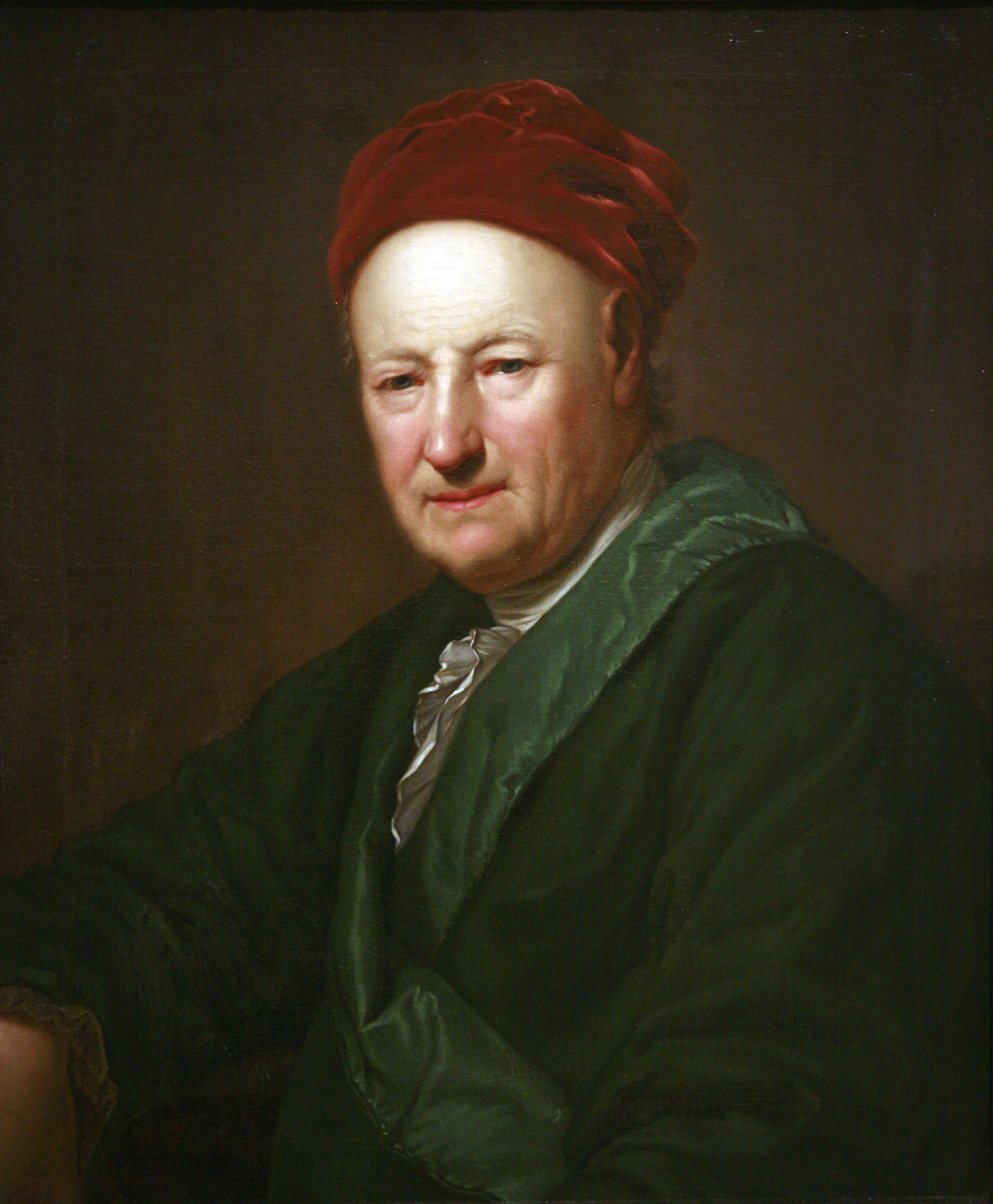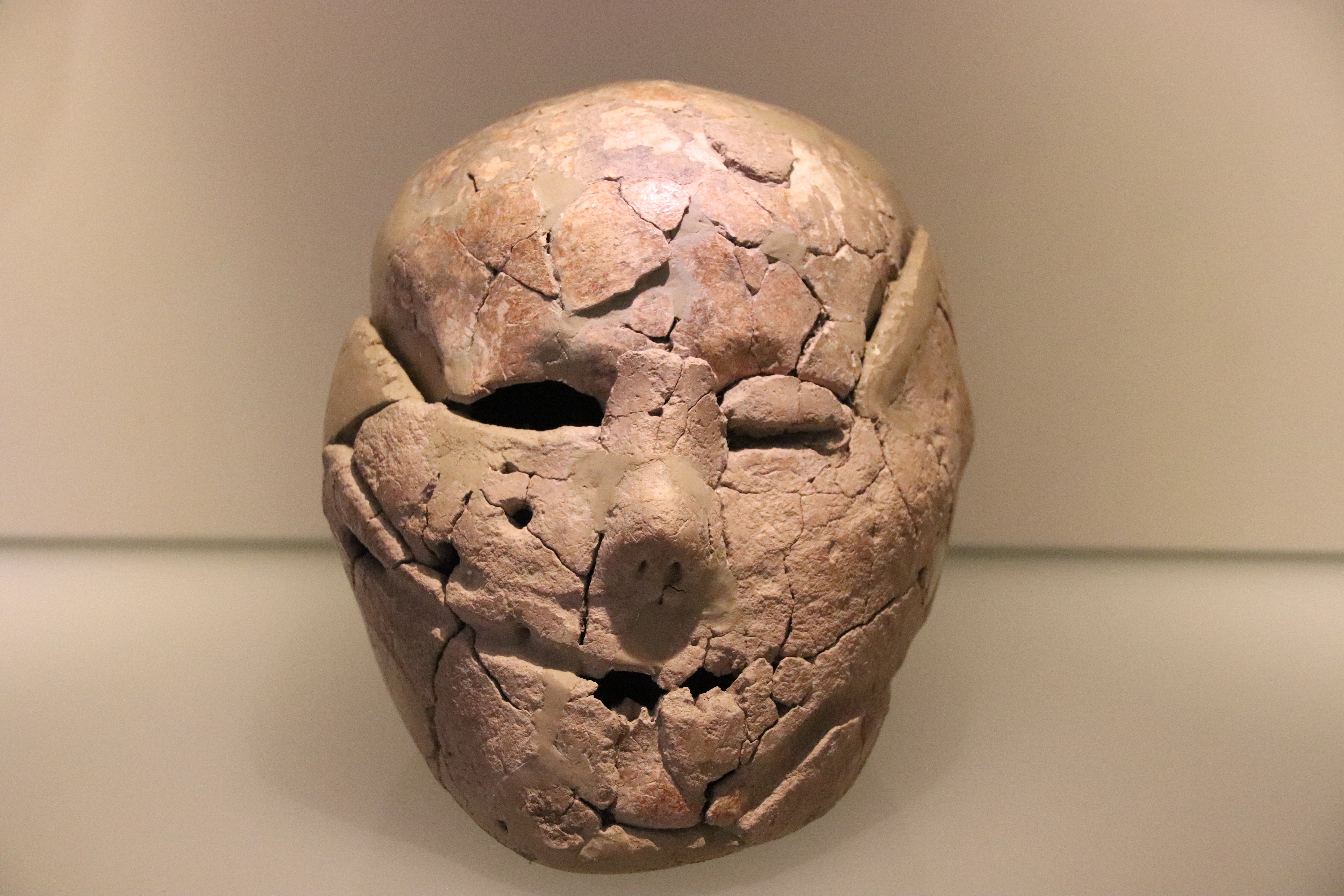|
Adam Friedrich Oeser
Adam Friedrich Oeser (17 February 1717 in Pressburg – 18 March 1799 in Leipzig) was a German etcher, painter and sculptor. Biography Oeser worked and studied in Pressburg (student of Georg Raphael Donner in sculpture) and Vienna at the Vienna Academy (student of Jacob van Schuppen and Daniel Grau in painting). He went to Dresden in Saxony in 1739, where he studied with Mengs and Dietrich, and created portraits and scenes for the Royal Opera, and mural paintings in Schloss Hubertusburg (1749). In 1756 Count Heinrich von Bünau commissioned him to decorate the newly built Schloss Dahlen. Oeser moved to Leipzig in 1759. Appointed director of the newly founded Academy there in 1764, he zealously opposed mannerism in art. He was a stout champion of Winckelmann's advocacy of reform on antique lines. He also befriended Winckelmann, who lived with him and his family in 1754/55. Oeser's chief importance was as a teacher. He was the drawing teacher of Johann Wolfgang Goet ... [...More Info...] [...Related Items...] OR: [Wikipedia] [Google] [Baidu] |
Portrait Of Adam Friedrich Oeser Mg 0107
A portrait is a painting, photograph, sculpture, or other artistic representation of a person, in which the face and its expressions are predominant. The intent is to display the likeness, personality, and even the mood of the person. For this reason, in photography a portrait is generally not a snapshot, but a composed image of a person in a still position. A portrait often shows a person looking directly at the painter or photographer, in order to most successfully engage the subject with the viewer. History Prehistorical portraiture Plastered human skulls were reconstructed human skulls that were made in the ancient Levant between 9000 and 6000 BC in the Pre-Pottery Neolithic B period. They represent some of the oldest forms of art in the Middle East and demonstrate that the prehistoric population took great care in burying their ancestors below their homes. The skulls denote some of the earliest sculptural examples of portraiture in the history of art. Historical portraitur ... [...More Info...] [...Related Items...] OR: [Wikipedia] [Google] [Baidu] |
Leipzig Nikolaikirche Eingangshalle Deckengemälde
Leipzig ( , ; Upper Saxon: ) is the most populous city in the German state of Saxony. Leipzig's population of 605,407 inhabitants (1.1 million in the larger urban zone) as of 2021 places the city as Germany's eighth most populous, as well as the second most populous city in the area of the former East Germany after (East) Berlin. Together with Halle (Saale), the city forms the polycentric Leipzig-Halle Conurbation. Between the two cities (in Schkeuditz) lies Leipzig/Halle Airport. Leipzig is located about southwest of Berlin, in the southernmost part of the North German Plain (known as Leipzig Bay), at the confluence of the White Elster River (progression: ) and two of its tributaries: the Pleiße and the Parthe. The name of the city and those of many of its boroughs are of Slavic origin. Leipzig has been a trade city since at least the time of the Holy Roman Empire. The city sits at the intersection of the Via Regia and the Via Imperii, two important medieval trade r ... [...More Info...] [...Related Items...] OR: [Wikipedia] [Google] [Baidu] |
Artists From Leipzig
An artist is a person engaged in an activity related to creating art, practicing the arts, or demonstrating an art. The common usage in both everyday speech and academic discourse refers to a practitioner in the visual arts only. However, the term is also often used in the entertainment business, especially in a business context, for musicians and other performers (although less often for actors). "Artiste" (French for artist) is a variant used in English in this context, but this use has become rare. Use of the term "artist" to describe writers is valid, but less common, and mostly restricted to contexts like used in criticism. Dictionary definitions The ''Oxford English Dictionary'' defines the older broad meanings of the term "artist": * A learned person or Master of Arts. * One who pursues a practical science, traditionally medicine, astrology, alchemy, chemistry. * A follower of a pursuit in which skill comes by study or practice. * A follower of a manual art, such as a m ... [...More Info...] [...Related Items...] OR: [Wikipedia] [Google] [Baidu] |
Artists From Bratislava
An artist is a person engaged in an activity related to creating art, practicing the arts, or demonstrating an art. The common usage in both everyday speech and academic discourse refers to a practitioner in the visual arts only. However, the term is also often used in the entertainment business, especially in a business context, for musicians and other performers (although less often for actors). "Artiste" (French for artist) is a variant used in English in this context, but this use has become rare. Use of the term "artist" to describe writers is valid, but less common, and mostly restricted to contexts like used in criticism. Dictionary definitions The ''Oxford English Dictionary'' defines the older broad meanings of the term "artist": * A learned person or Master of Arts. * One who pursues a practical science, traditionally medicine, astrology, alchemy, chemistry. * A follower of a pursuit in which skill comes by study or practice. * A follower of a manual art, such as ... [...More Info...] [...Related Items...] OR: [Wikipedia] [Google] [Baidu] |
German People Of Austrian Descent
German(s) may refer to: * Germany (of or related to) **Germania (historical use) * Germans, citizens of Germany, people of German ancestry, or native speakers of the German language ** For citizens of Germany, see also German nationality law **Germanic peoples (Roman times) * German language **any of the Germanic languages * German cuisine, traditional foods of Germany People * German (given name) * German (surname) * Germán, a Spanish name Places * German (parish), Isle of Man * German, Albania, or Gërmej * German, Bulgaria * German, Iran * German, North Macedonia * German, New York, U.S. * Agios Germanos, Greece Other uses * German (mythology), a South Slavic mythological being * Germans (band), a Canadian rock band * "German" (song), a 2019 song by No Money Enterprise * ''The German'', a 2008 short film * "The Germans", an episode of ''Fawlty Towers'' * ''The German'', a nickname for Congolese rebel André Kisase Ngandu See also * Germanic (other) ... [...More Info...] [...Related Items...] OR: [Wikipedia] [Google] [Baidu] |
18th-century German Male Artists
The 18th century lasted from January 1, 1701 ( MDCCI) to December 31, 1800 ( MDCCC). During the 18th century, elements of Enlightenment thinking culminated in the American, French, and Haitian Revolutions. During the century, slave trading and human trafficking expanded across the shores of the Atlantic, while declining in Russia, China, and Korea. Revolutions began to challenge the legitimacy of monarchical and aristocratic power structures, including the structures and beliefs that supported slavery. The Industrial Revolution began during mid-century, leading to radical changes in human society and the environment. Western historians have occasionally defined the 18th century otherwise for the purposes of their work. For example, the "short" 18th century may be defined as 1715–1789, denoting the period of time between the death of Louis XIV of France and the start of the French Revolution, with an emphasis on directly interconnected events. To historians who expand ... [...More Info...] [...Related Items...] OR: [Wikipedia] [Google] [Baidu] |
German Male Sculptors
German(s) may refer to: * Germany (of or related to) **Germania (historical use) * Germans, citizens of Germany, people of German ancestry, or native speakers of the German language ** For citizens of Germany, see also German nationality law **Germanic peoples (Roman times) * German language **any of the Germanic languages * German cuisine, traditional foods of Germany People * German (given name) * German (surname) * Germán, a Spanish name Places * German (parish), Isle of Man * German, Albania, or Gërmej * German, Bulgaria * German, Iran * German, North Macedonia * German, New York, U.S. * Agios Germanos, Greece Other uses * German (mythology), a South Slavic mythological being * Germans (band), a Canadian rock band * "German" (song), a 2019 song by No Money Enterprise * ''The German'', a 2008 short film * "The Germans", an episode of ''Fawlty Towers'' * ''The German'', a nickname for Congolese rebel André Kisase Ngandu See also * Germanic (disambiguation ... [...More Info...] [...Related Items...] OR: [Wikipedia] [Google] [Baidu] |
Sophie Dinglinger
Sophie Friederike Dinglinger (1736–1791) was a German painter. Life and work Born in Dresden, Dinglinger was the daughter of goldsmith Johann Friedrich Dinglinger, and granddaughter of the better known goldsmith Johann Melchior Dinglinger. She studied with Adam Friedrich Oeser. She invented a method to fix pastel to paper which was used by, among others, Dora Stock; this appears to have allowed the use of deeper colors and a naturalistic treatment of fabric. She produced miniature paintings and pastels during her career. Henriette-Félicité Tassaert Henriette-Félicité Tassaert (born 4 May 1766 in Paris; died 8 June 1818 in Berlin) was a German painter of Flemish extraction. Biography Born in Paris, Tassaert was a member of the Tassaert family of artists. She was the daughter of sculptor ... lived with Dinglinger during the start of her sojourn in Dresden. [...More Info...] [...Related Items...] OR: [Wikipedia] [Google] [Baidu] |
Johann Carl Friedrich Dauthe
Johann Carl Friedrich Dauthe (26 September 1746 – 13 July 1816) was a German architect and etcher who specialised in the Neo-Classical style. Dauthe was born in Leipzig and educated by Adam Friedrich Oeser. In his hometown, where he had been the city's construction official most of his buildings have been built, such as the first concert chamber of the Gewandhaus (1781), the square now known as the Augustusplatz (1785) and the interior of the St. Nicholas Church (1794). Dauthe became member of the Lodge ''Minerva zu den drei Palmen'' Leipzig in 1778. He died at the age of 70 in the small Silesian city of Bad Flinsberg. see also: Promenadenring (Leipzig) The Promenadenring Leipzig (''Ring of promenades'') is the oldest municipal landscape park in Germany and one of the most important garden and cultural monuments in the city. The term is also used as a synonym for Leipzig's inner city ring ro ... External linksMasonic Lodge ''Minerva zu den drei Palmen'' Leipzig {{DE ... [...More Info...] [...Related Items...] OR: [Wikipedia] [Google] [Baidu] |


